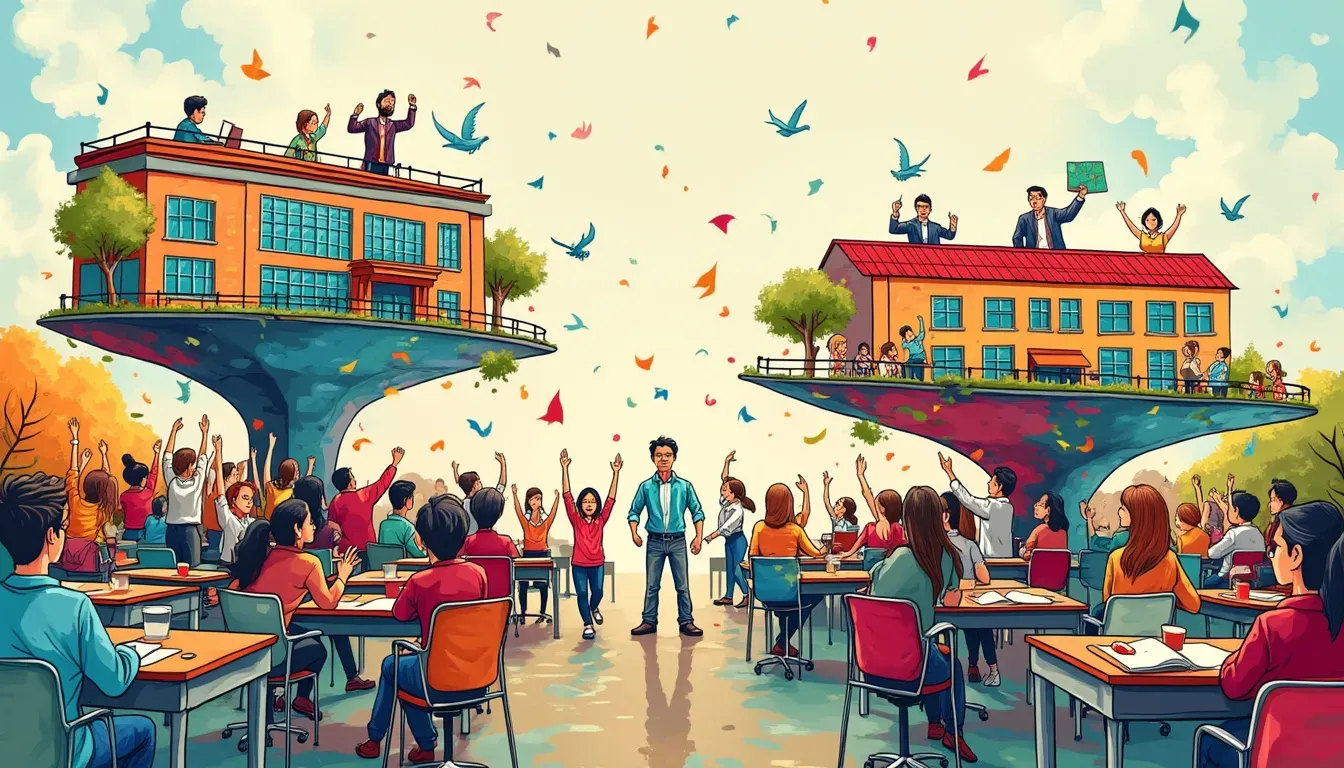Understanding The Current State of Education Funding and Teacher Compensation
In recent decades, there has been a prevalent discourse on the effectiveness and allocation of resources within public school systems. This conversation often highlights the disparities between teacher compensation and the growing costs tied to administrative expenses.
The Disproportionate Growth of Administration
As noted, teacher salaries have seen minimal adjustments—increasing by just about 3% since 1970, despite an astronomical rise in overall educational spending. This dichotomy poses a fundamental question: where is the money going? In essence, much of the funding is not directly reaching teachers or classrooms; instead, it appears to be funneled into mounting administrative costs. Since 2000, research indicates a staggering 95% increase in the number of administrators, overshadowing the growth in student enrollment and the number of teachers, which only saw a 10% increase.
"Education has transformed into a jobs program, with administrative bloat mirroring similar patterns seen in higher education and healthcare."
The structural inefficiencies manifest as an unchecked expansion of the bureaucratic layer, often justified by an indeterminate demand for administrative roles. The perceived lack of limitations in funding has inadvertently fueled this growth, which would typically be restrained by market forces in a more competitive ecosystem.
The Role of Competition in Education Systems
Emerging studies and anecdotal evidence from states like Florida and Arizona suggest that introducing a competitive element into the public school system—such as the rise of charter and private schools—may positively impact public education by forcing schools to reevaluate their spending.
The insights from 11 academic studies conducted in Florida highlight that competition has tangibly beneficial impacts: it forces public schools to allocate funds more efficiently, often directing them towards enhancing the classroom experience rather than administrative costs. Florida has improved drastically on the national scale, from bottom rankings to being considered top-tier, without an increase in spending.
"Competition acts as a catalyst for improvement, driving schools to better performance through strategic resource allocation."
The Impact of Competitive Pressures
In systems where there is school choice, public institutions are compelled to enhance their offerings to retain both students and quality teachers. Charter schools introduce this competitive dynamic, influencing public schools to thrive. A remarkable example is Texas, where a study showed that announcing new charter schools prompted public school leaders to decrease their administrative budgets and channel those resources towards teaching and student programs.
The findings suggest two key trends:
- Teachers have better opportunities where schools must fight to retain them, leading to potentially better pay and working conditions.
- A decline in administrative expansion as schools reallocate their focus on direct education delivery.
Challenges and Barriers to Change
Despite positive findings, the implementation of competition among schools faces significant resistance. Skepticism around diverting funds to schools perceived as "stealing" from public education abounds. Moreover, strong opinions against altering the educational status quo can result in policies that hinder experimentation with competitive elements like school choice.
"Resistance to embracing competition in education often stems from entrenched ideologies and misconceptions about resource allocation."
Rethinking Peer Review in Educational Research
Beyond the dynamics of school funding, a broader issue highlighted in education research is the existing prejudice against studies that challenge conventional wisdom. The peer review process, particularly in educational circles, is often criticized for ideological biases that can undermine rigorous scholarship. Educators and researchers reporting findings that contradict popular educational paradigms, such as those supporting school choice, face stringent scrutiny. This bias deters innovation, as researchers might shy away from controversial yet necessary inquiries.
"Peer-review systems in education can reflect prevailing biases, complicating the pathways for novel research findings to influence policy."
Forward: Embracing Change and Innovation
The road to improving public education is multifaceted. Increased competition through school choice programs, whether through charters or private institutions, shows promise in stimulating advancements within public schools. Such shifts require embracing change, acknowledging the limitations of entrenched systems, and leveraging research across states that successfully integrate competitive models.
Conclusion
Ultimately, the dialogue around education needs to evolve, moving past traditional dogmas that resist change. By encouraging competition and using market-like forces to spur development, public education systems can achieve greater efficacy. The goal should shift towards creating environments where teachers are encouraged and adequately compensated, and where administrative growth is kept in check while delivering higher education standards to students.
EDUCATION, COMPETITION, PEER REVIEW, PUBLIC FUNDING, SCHOOL CHOICE, ADMINISTRATION, YOUTUBE, TEACHERS

